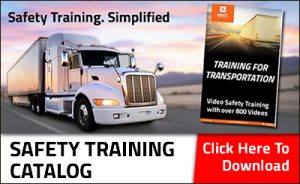Nuclear verdicts are on the rise, now more than ever. With these verdicts totaling $10 million or more each, this presents a real threat to your business. In fact, the rise of nuclear verdicts has resulted in many trucking companies going out of business, and many insurance carriers are exiting the trucking industry completely. With insurance costs and litigation risk for transportation firms soaring around every turn, it is more imperative than ever to enforce safety policies and procedures, and have clear documentation.
And while the national inflation rate is about 2 percent, insurance rates are actually increasing by 50 – 100 percent year over year for trucking companies, due to nuclear verdicts.
What is litigation risk?
Any roadside incident presents the opportunity for litigation. With the appetite for litigation at an all-time high, it is important to train drivers on how to avoid these incidents by using your safety protocols—the more robust your safety program, the smaller the risk for litigation.
Nuclear Verdicts and Their Impact
In October 2019, Country Wide RV Transport (CWRV) was one of the latest trucking companies that fell victim to a nuclear verdict. The second-largest RV and motor-home transportation provider in the country, they employed nearly 600 drivers and contractors, all of whom were informed right before the holidays that they would no longer have jobs. The driver who caused the accident was an independent contractor, but the company was still held liable for damages to the tune of $26.6 million.
In the largest nuclear verdict of 2019, and, in fact, in history, a jury awarded a $280 million verdict in only 45 minutes of deliberation. Was the accident tragic? Absolutely. Was it the truck driver’s fault? Absolutely. Was the verdict inordinately high? Absolutely.
Fatalities are decreasing, yet nuclear verdicts are increasing.
Each year for the last decade has seen significant increases in litigation resulting in nuclear verdicts, with an extreme uptick in the last two years. Plaintiffs’ lawyers have discovered a gold mine in cases against trucking companies, and you better believe they are hard at work mining every dollar, or in this case, every million that they can possibly get. So while your company is hovering at a 5% profit margin, you’re funding plaintiffs’ lawyers’ fancy vacations.
You can’t afford it.
Insurance costs are rising rapidly, even for squeaky-clean trucking companies. Insurance providers understand the litigation risks associated with the industry and lose a great deal on nuclear verdicts. Many insurance providers don’t even cover trucking companies anymore due to litigation risk.
What can you do about it?
With nuclear verdicts and insurance costs on the rise, you can’t afford to take any chances. This is not going away and, in fact, is only getting worse.
The best leg you can stand on in court is your culture and history of safety, with airtight documentation. Juries, judges, lawyers, and insurance companies become very interested in your culture of safety and history of documentation when a settlement is on the line.
Learn more about building and maintaining a culture of safety
To get the most out of your safety program and prevent excessive insurance costs and litigation risk, you need a program that is easily accessible to drivers and offers real-time, cloud-based documentation.
Not sure where to start?
Check out our whitepaper on controlling insurance costs, which will help you understand:
- • What part of your risk exposure you can control
- • What you can actively do to mitigate your risk exposure
- • How your company can proactively work to establish a culture of safety that can help reduce accidents, improve defensibility in court, and give access to the best possible insurance rates
Download the Controlling Insurance Costs whitepaper now!














